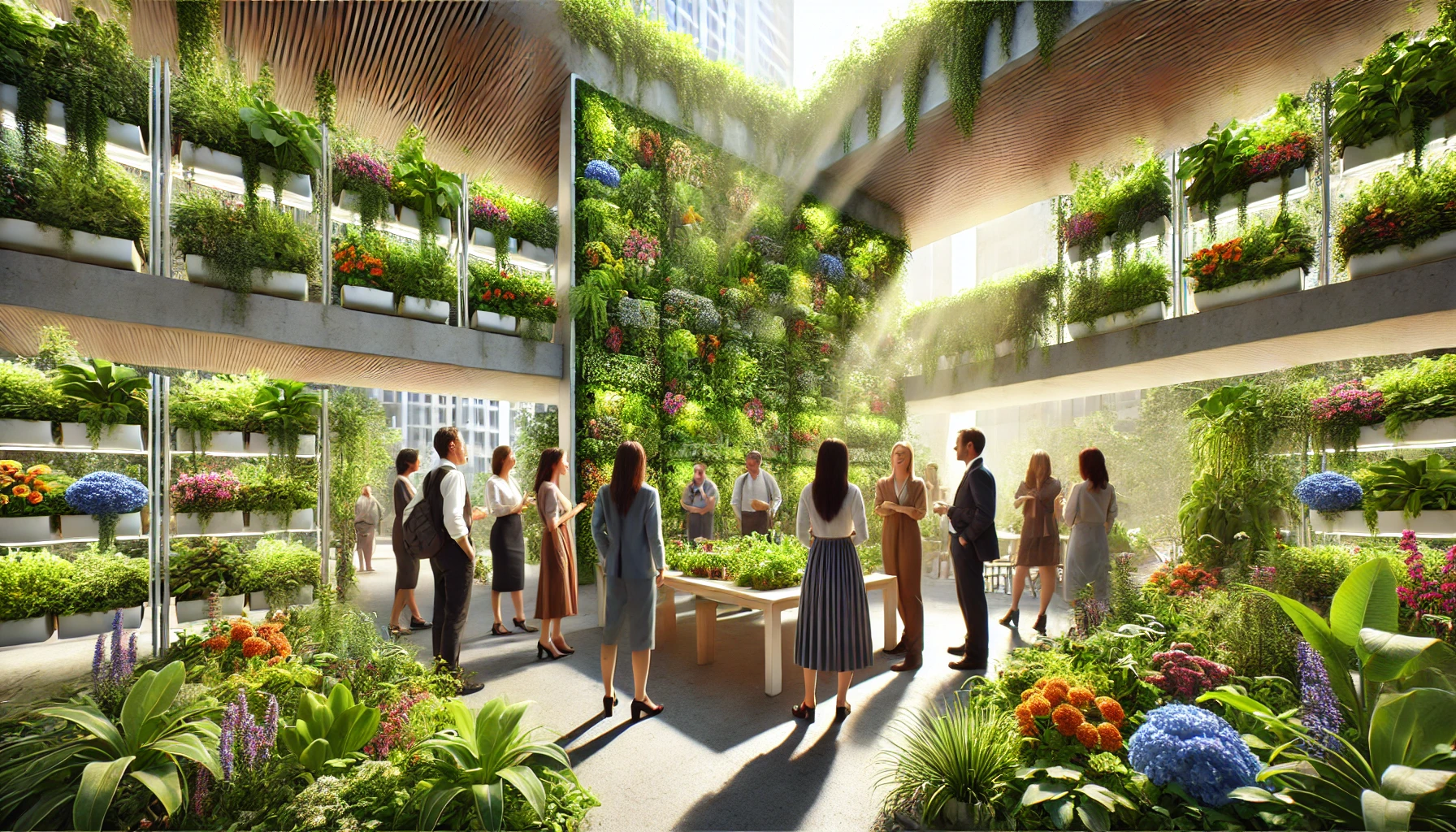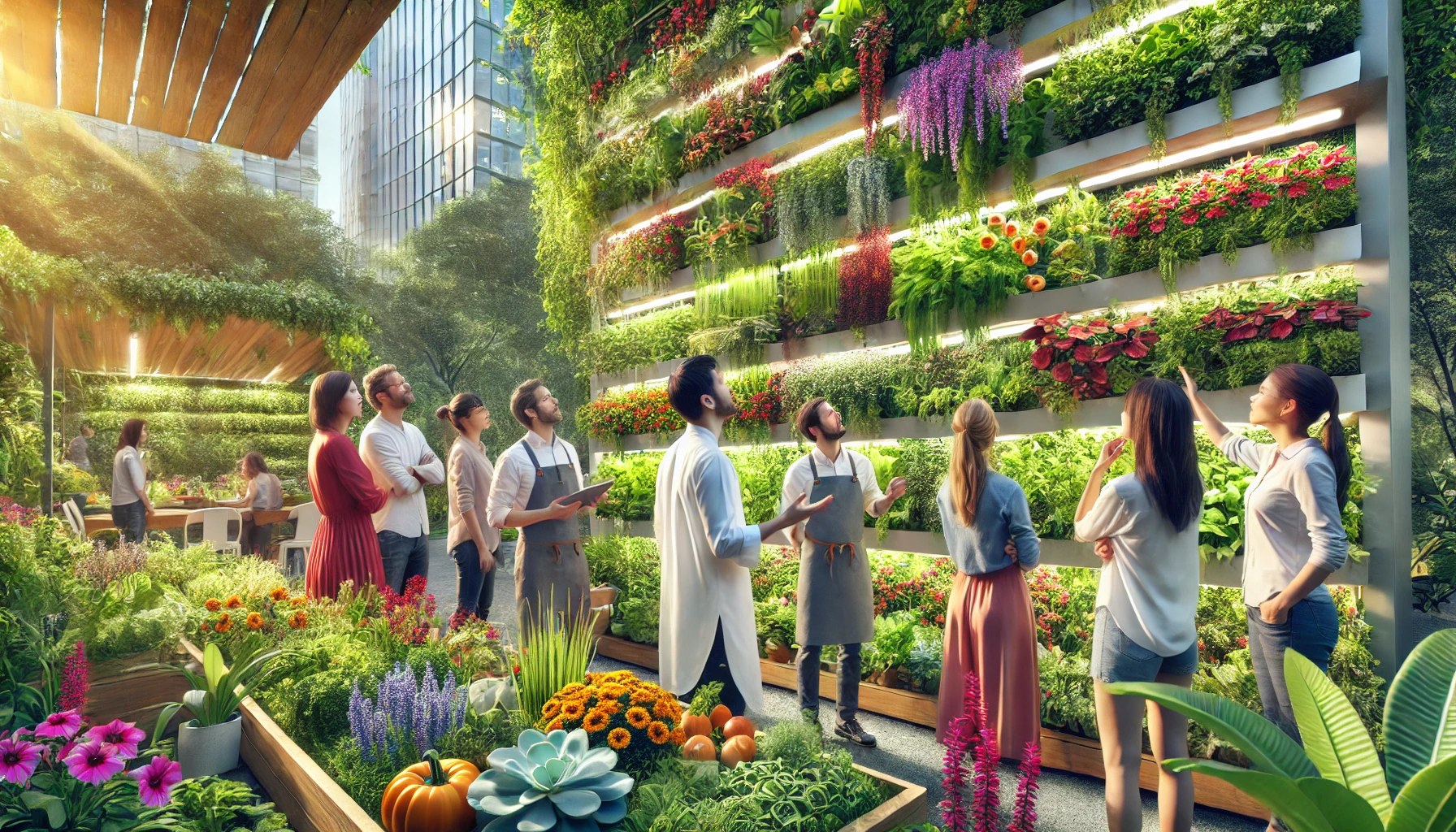In a world where urban spaces are shrinking and the desire for greener living is growing, vertical gardens have emerged as a game-changer. The rising popularity of urban vertical gardens speaks to a collective longing for nature amidst concrete jungles.
These innovative gardening systems are redefining how we think about greenery in urban environments. With benefits like space-saving design and undeniable aesthetic appeal, vertical gardens offer a practical solution for urban dwellers looking to incorporate nature into their daily lives.
This article dives into the multifaceted world of vertical gardens, exploring their pros, cons, and the potential they hold for reshaping urban landscapes. If you’re wondering whether vertical gardens are worth it, you’re in the right place to discover the answers through detailed vertical garden reviews.
What Makes a Vertical Garden Worth It?
The allure of vertical gardens extends beyond their visual charm. Here’s a closer look at why they’re worth considering:
Financial and Environmental Benefits
- Efficient Space Utilization: For urban residents with limited outdoor areas, vertical gardens provide an efficient way to grow plants without consuming precious ground space.
- Cost-Effective Solutions: While initial costs may be high, vertical gardens can save money in the long run by reducing energy bills (thanks to improved insulation) and offering fresh produce at home.
- Environmental Advantages: Vertical gardens contribute to cleaner air by filtering pollutants and producing oxygen. They also help regulate building temperatures, reducing the urban heat island effect.
Contributions to Urban Farming
- Vertical gardens make urban farming accessible, enabling residents to grow herbs, vegetables, and fruits right on their walls.
- This localized production reduces reliance on transported goods, minimizing carbon footprints.
Testimonials and Experiences
Garden enthusiasts often share stories about how vertical gardens have transformed their living spaces. “My balcony felt lifeless until I installed a vertical garden,” says Sara, an urban gardener. “Now it’s my little oasis of calm in the city.” Such experiences highlight the practical and emotional benefits of these systems.
The Psychological Benefits of Vertical Gardening
Beyond aesthetics and environmental advantages, vertical gardening can have significant mental health benefits. Research suggests that interacting with plants reduces stress, improves mood, and enhances creativity. Urban dwellers often find solace in maintaining vertical gardens, viewing the process as a therapeutic escape from the pressures of city life.
Analyzing the Drawbacks: Thinking Beyond Beauty
No innovation is without its challenges. Vertical gardens, while rewarding, come with considerations worth noting:
Potential Structural Issues
- Vertical gardens add weight to walls and structures, necessitating a solid foundation.
- Improper installation can lead to water leakage, damaging buildings over time.
- Over time, structural components may wear down, requiring periodic repairs or replacements to ensure safety and functionality.
Climate and Environmental Factors
- Dry or extreme climates may hinder the success of vertical gardens, requiring careful plant selection and watering systems.
- Plants in vertical gardens may face uneven exposure to sunlight and wind, affecting growth.
- Seasonal changes may demand additional maintenance, such as plant rotation or replacement.
Upfront Costs and Investments
- High-quality vertical garden systems can be expensive, with additional costs for maintenance technology like automated irrigation systems.
- The long-term financial benefits may not always offset these initial investments for some users.
- Specialized materials, such as UV-resistant panels and advanced drainage systems, add to the overall cost.
Design Challenges in Vertical Gardening
Creating a thriving vertical garden requires thoughtful planning and awareness of potential pitfalls:
Common Design Flaws
- Poor Material Choices: Using non-durable materials can lead to faster wear and tear.
- Overcrowding: Placing too many plants in a small area can stifle growth and reduce overall health.
Challenges with Sunlight, Drainage, and Soil Use
- Sunlight: Plants at the top may receive more light than those at the bottom, creating an imbalance.
- Drainage: Ineffective water systems can cause overwatering at the base and dryness at the top.
- Soil Limitations: Limited soil space restricts root growth, affecting plant health.
Overcoming Technological Limitations
To address these issues, technological innovations have emerged. Automated irrigation systems now come with sensors that adapt watering schedules based on real-time data, ensuring consistent hydration.
Advances in lightweight materials have also enabled vertical gardens to be installed in more diverse settings, including mobile structures and temporary installations.
Design Inspiration
To overcome common challenges, innovative designs like modular panels and tiered systems have been developed. For instance, living walls made of interchangeable planters allow for flexibility and easy maintenance.
Integrating vertical gardens into existing architecture, such as balcony railings or exterior facades, can further enhance their practicality without compromising structural integrity.
Maintenance: How Feasible is Maintaining a Vertical Garden?
Maintenance can make or break the success of a vertical garden. Here’s what to consider:
Routine Maintenance Tasks
- Regular watering and pruning are essential to keep plants healthy.
- Cleaning the structure to prevent mold and pests ensures longevity.
- Regularly inspecting for signs of wear or malfunction in irrigation systems helps avoid long-term damage.
Pest Control and Mitigation Strategies
- Vertical gardens are not immune to pests like aphids and mites. Regular inspections and organic pest control methods are crucial.
- Some vertical garden systems incorporate natural deterrents, such as companion planting, to reduce pest issues.
Time and Resource Investment
- Automated irrigation systems simplify maintenance but require initial setup and occasional repairs.
- While vertical gardens can be time-intensive initially, experienced gardeners often find the upkeep manageable with proper planning.
Seasonal Considerations
In colder climates, some plants may need to be replaced or relocated during winter. Seasonal maintenance tasks, such as fertilizing and adjusting watering schedules, can also affect long-term feasibility.
Case Studies: Real-life Vertical Garden Implementations
Exploring real-world examples can provide valuable insights into the potential of vertical gardens:
Inspiring Success Stories
- Singapore’s Supertree Grove: These iconic vertical gardens integrate solar panels and cooling technologies, showcasing the potential for large-scale vertical gardening.
- Small Urban Balconies: Many city dwellers have turned tiny balconies into lush vertical gardens, adding greenery to their homes.
- Corporate Green Initiatives: Companies are incorporating vertical gardens into their office spaces to improve employee well-being and air quality.
Lessons from Failures
- A poorly designed system in an office building in New York failed due to inadequate drainage, leading to water damage and plant decay. Such cases emphasize the importance of planning and professional installation.
- Another project in a hot climate suffered from plant dehydration because it lacked proper irrigation systems. These lessons highlight the need for context-specific solutions.
Expert Interviews
“Vertical gardens are a harmonious blend of art and science,” says landscape architect James Lin. “When done right, they’re transformative for urban spaces.” Horticulturist Anna Rivera adds, “The key is selecting plants that thrive in the given environment and providing consistent care.”
Creative Projects Around the Globe
Vertical gardening is not just a practical solution but also a creative endeavor. In Spain, an artist turned a public wall into a living canvas by combining native plants with a mural, demonstrating how vertical gardens can serve as both functional and artistic installations.

Experts’ Take: Balancing Efficacy with Aesthetics
Professional opinions shed light on how to maximize the benefits of vertical gardens:
Insights from Landscapers and Horticulturists
- Choose plants suited to local climates to reduce maintenance and improve success rates.
- Use modular systems that can be easily adapted and replaced as needed.
Innovations in Vertical Gardening
- Self-Watering Systems: Advanced irrigation technology ensures consistent hydration for all plants.
- Smart Sensors: Devices that monitor moisture and temperature make maintenance more precise and efficient.
- Biofilters: Some vertical gardens integrate biofilters that purify air, adding another layer of functionality.
Combining Functionality and Beauty
Experts recommend balancing functionality with aesthetics to create sustainable and visually appealing designs. Using native plants, incorporating colorful foliage, and experimenting with textures can enhance the visual impact of a vertical garden.
Comparison: Vertical Gardens vs. Traditional Gardening
How do vertical gardens stack up against conventional gardening methods?
Efficiency in Space and Water Usage
- Vertical gardens utilize space more effectively, making them ideal for small areas.
- Drip irrigation systems in vertical gardens often use water more efficiently than traditional methods.
Differences in Plant Growth and Diversity
- While traditional gardens can accommodate larger plants, vertical gardens are better suited for herbs and compact vegetables.
- Both methods support biodiversity, but vertical gardens may require more strategic planning.
Environment-Specific Challenges
- Traditional gardens are more versatile in rural settings, while vertical gardens excel in urban spaces.
- Soil quality and sunlight availability are critical in both approaches but can be managed differently.
Hybrid Approaches
Combining vertical gardening with traditional methods can yield the best of both worlds. For example, traditional garden beds can complement vertical structures to maximize diversity and productivity in limited spaces.
Conclusion: The Future of Vertical Gardening
Vertical gardens represent a promising innovation for urban living. Their advantages—from space-saving designs to environmental benefits—make them an attractive choice for many.
However, challenges like structural requirements, climate considerations, and maintenance demands cannot be ignored.
As technology evolves, vertical gardens are poised to become even more efficient and accessible, potentially redefining urban landscapes. Emerging trends, such as integrating renewable energy and AI-driven monitoring systems, offer exciting possibilities for the future.
Whether you’re a seasoned gardener or a curious beginner, embracing vertical gardening could be a step towards a greener, more sustainable future.


It’s amazing how these setups can bring nature into even the smallest areas, indoors or outdoors. The balance between looks and function is key. Some vertical gardens focus more on beauty than on gardening. This makes me think, is there a trade-off between looks and plant growth? I’d love to hear your thoughts on finding the right balance.
“You’re absolutely right—vertical gardens are such a great way to bring nature into small spaces! Striking that balance between aesthetics and functionality is key. In my experience, there can sometimes be a trade-off between looks and plant growth, especially when design choices prioritize visual appeal over factors like proper lighting, airflow, or plant compatibility.
The good news is, with the right planning, you don’t have to choose one over the other. For example, using plants that thrive in the same light and water conditions ensures both health and beauty. Plus, mixing ornamental plants with functional ones like herbs or small vegetables can give you the best of both worlds.
What kind of vertical garden setup are you most interested in? I’d love to explore ideas with you!”
Let me know if you’d like me to adjust this further!